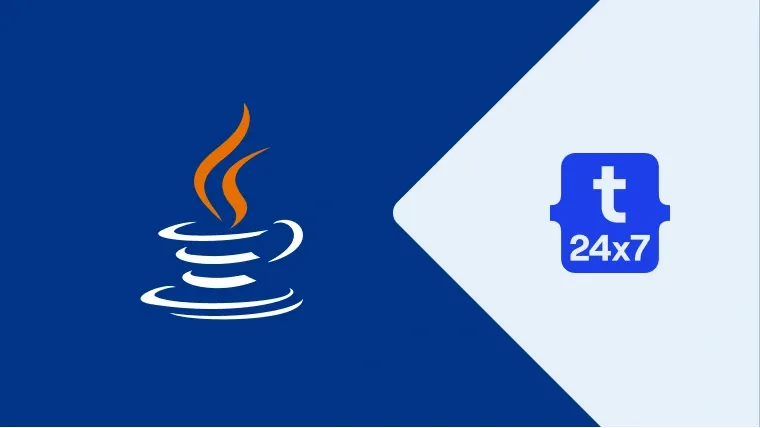This tutorial provides all the steps required to install the LTS version of Java i.e. Oracle Java 11 officially distributed by Oracle for Window. It provides the steps required to install Java 11 on Windows 10. The steps should be the same for other versions of Windows operating system.
We suggest removing existing versions of Java unless an otherwise older version is explicitly required for any other software like Android Studio. We can check the currently installed and active JDK on the console as mentioned in Fig 1.

Fig. 1
We must note that the JRE won't be bundled with JDK in version 11, as it was available until version 10. We need to install the JRE separately if necessary.
Step 1: Download JDK
Open the browser and search for "Download JDK 11" or click the link to download from the Oracle website. The JDK download page will appear, as shown in Figure 2.

Fig. 2
Accept the License Agreement and click on the link to download the installer as highlighted in Fig 2.a and Fig 2.b. It will start downloading JDK 11 installer for Windows.

Fig 2.a

Fig 2.b
Step 2: Install JDK
Now execute the downloaded JDK installer by double-clicking it. It might ask system permission before starting the installation. Click on yes to allow the installer to execute itself. It shows the installer welcome screen as displayed in Fig 3.

Fig 3
Click on Next to initiate the installation process. The next screen shows options to select optional features to be installed together. Leave the default options without making any changes. If required, we can also change the installation location on this screen, as shown in Fig 4.

Fig 4
Now click on the Next Button to start the installation. It will show the progress as displayed in Fig 5.

Fig 5
It shows the success screen after completing the installation, as mentioned in Fig 6.

Fig 6
Now open the Command Prompt and type the command java -version to confirm whether it's installed successfully as mentioned in Fig 7.

Fig. 7
We might need to set the environment variable in case the system does not detect the installed JDK. To do so, follow these steps.
Right Click -> My Computer(This PC) -> Properties -> Advbanced System Settings
The above steps will open the Windows settings panel as shown in Fig 7.

Fig 7
Now click on Environment Variables, select Path under the System Variables section, and click on Edit. We need to add the path of the installed JDK to the system Path.
Click on New Button and add the path to
Now again open the console and test the Java version as shown in Fig 8.

Fig 8
Getting started with Java - Hello World
In this step, we will write, compile, and execute our first program in Java using the standard Hello World example.
Now write the first Java program as shown below, save the program as HelloWorld.java and exit the editor. Make sure that the class name and file name are the same.
class HelloWorld {
public static void main( String[] args ) {
System.out.println( "Hello World !!\n" );
}
}Now open the command prompt and navigate to the path where you have saved your Java program. Use the below-mentioned commands to compile and execute the program.
# Compile - Specify file name and extension javac HelloWorld.java
# Execute - Spicy file name java HelloWorld
# Output Hello World !!
Summary
These are the easy-to-install steps required to install Oracle Java on Windows and write, compile, and execute the Java program.

